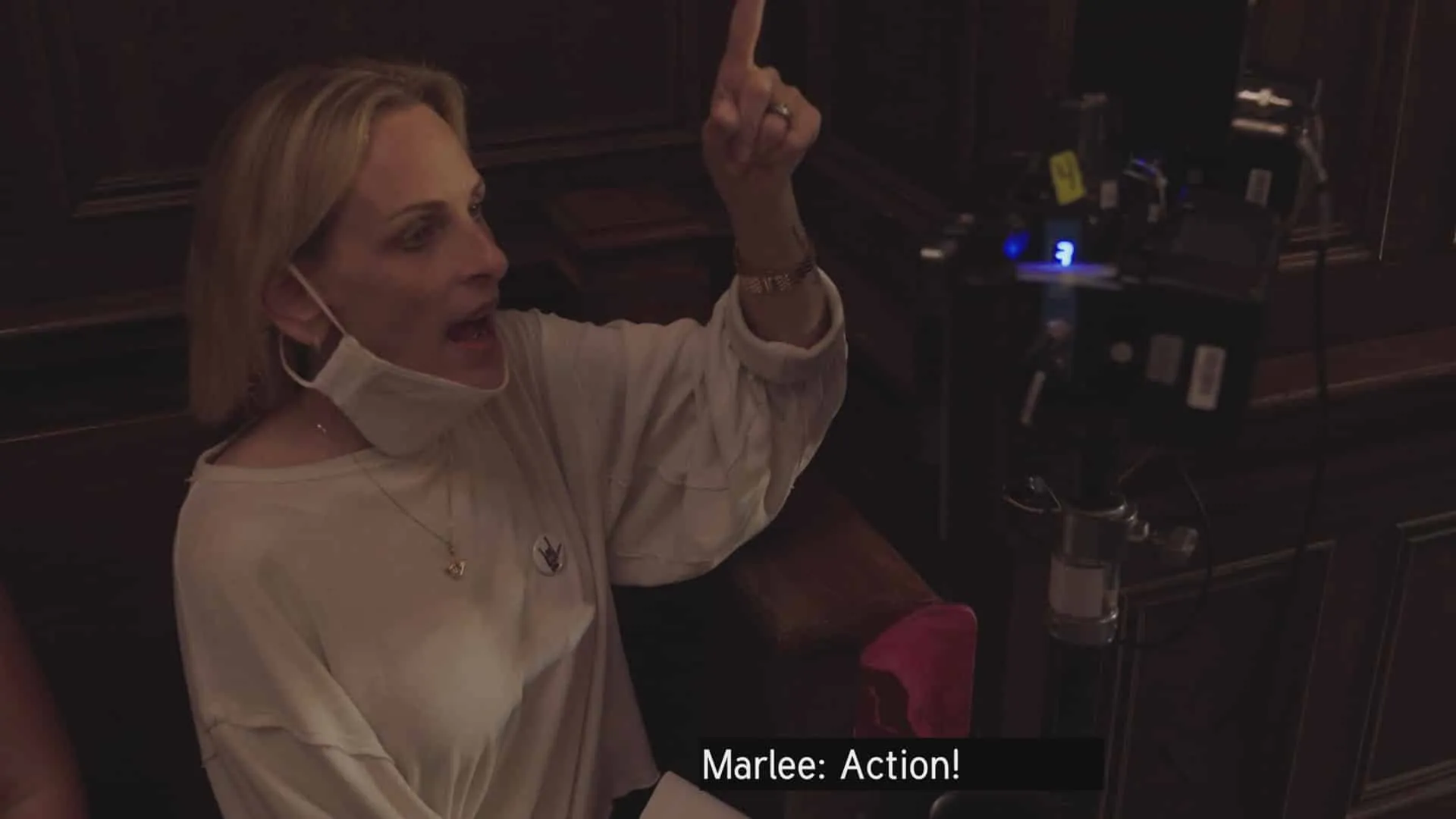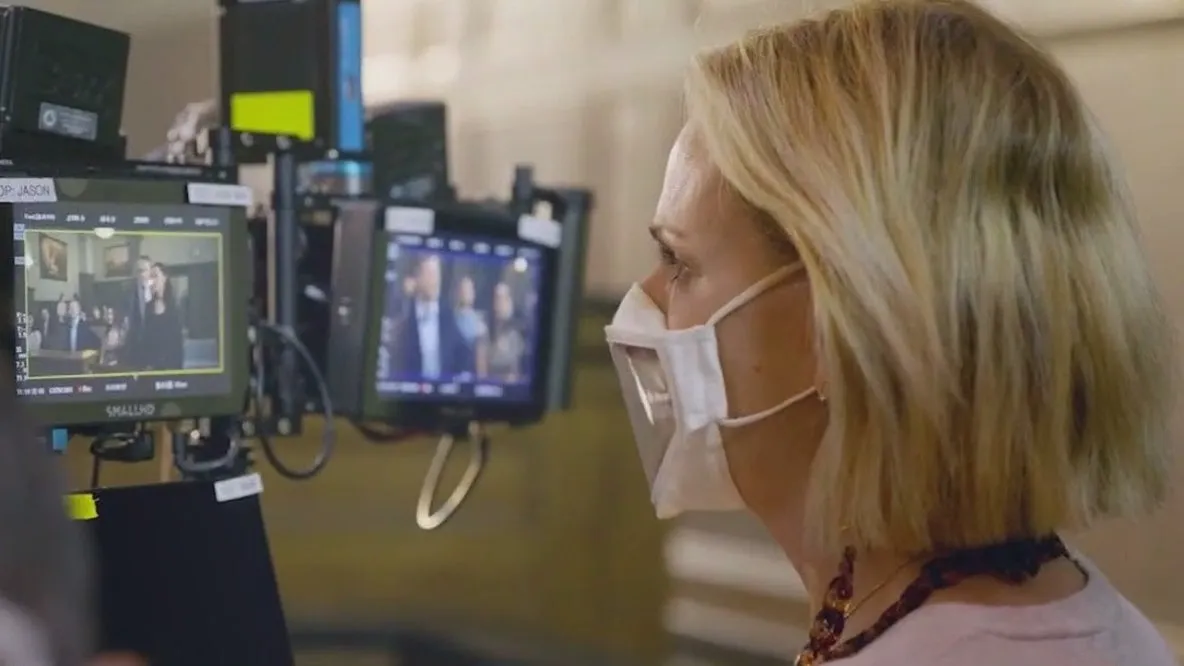Marlee Matlin’s career has charted an unexpected course in the world of cinema. Her achievement as the first deaf actress to earn an Academy Award immediately sets a high bar, inviting viewers to reassess the conventional pathways in storytelling.
This documentary offers a close look at her personal milestones and professional milestones, inviting audiences to examine a life marked by both bold triumphs and significant challenges. The film focuses on the evolution of a celebrated career, moving from her breakthrough role in Children of a Lesser God to a notable appearance in CODA.
The production employs a storytelling style that is clear and straightforward, featuring scenes in American Sign Language paired with on-screen captions. This approach ensures that the film speaks directly to a diverse audience, regardless of their hearing abilities. It is a study in how personal reflections can coexist with public achievements, capturing the nuances of a career that has sparked discussion on both resilience and representation.
The narrative is built around a combination of personal interviews, historical footage, and reflective commentary. This method offers a layered view of Matlin’s life, balancing moments of celebration with a careful look at her personal struggles and public controversies.
Filmmaking Techniques and Documentary Structure
Shoshannah Stern occupies a dual role as director and on-screen presence, giving the work an intimate feel. Her perspective as a deaf filmmaker shapes every element of the presentation. Stern’s involvement is clear in the careful construction of each scene, with every detail arranged to serve a clear purpose.
The film places spoken dialogue and American Sign Language in direct conversation with one another, using on-screen captions and clean visual graphics to make every exchange easy to follow.
Camera work shifts smoothly between tight close-ups that capture the smallest expressions during interviews and wider frames that offer a sense of space when groups gather. This change in visual style emphasizes both moments of personal insight and the broader discussions that frame the subject’s life.
The editing strategy pairs archival footage with contemporary interviews, highlighting the progression of Matlin’s career from her breakthrough performance in an early theatrical production to her more recent work. The methodical editing provides clear signposts as the viewer moves from a documented past into present-day reflections.
The film follows a linear structure that recounts significant milestones in Matlin’s career. Each segment is carefully arranged so that transitions between historical footage and current recollections occur seamlessly. Visual cues and precise audio transitions help signal shifts in time, ensuring that the audience is never lost in the unfolding narrative.
Set design during the interviews is modest yet thoughtful, creating a relaxed setting that invites honesty. Background music and ambient sounds are chosen with care, matching the tone of the dialogue without overwhelming it. Every technical decision supports the film’s overall construction, contributing to a coherent work that respects both its subject and the community represented.
Tracing Matlin’s Evolution
Marlee Matlin’s early career reads like a case study in overcoming industry norms. Her performance in Children of a Lesser God reshaped expectations, bringing a fresh perspective to film and spotlighting the skill and determination of a young actress.
Securing a Best Actress Oscar at a tender age signaled a turning point, marking a milestone that altered the discourse around representation in entertainment. That win stood as a beacon for performers from communities seldom heard in mainstream media.
Following that breakthrough, Matlin encountered a series of professional obstacles. She found herself confined to roles that hardly captured the range of her talent, while facing a persistent demand to serve as a voice for her entire community.
The pressures of being a singular representative in a field with few opportunities tested her resolve. Yet, her perseverance shone through, as she navigated an industry that was slow to accommodate diverse storytelling. Her career during these years highlights a mix of commendable triumphs and stumbles that reflect the high cost of pioneering work.
Matlin’s commitment to advocacy is evident throughout her work. Her public efforts to secure closed captioning and improve media accessibility speak to a deep personal investment in the rights of those with hearing differences.
Her presence in the film has opened doors that previously remained shut, setting the stage for more inclusive casting and narrative choices in later projects. In this respect, her influence is visible in the subtle shifts toward richer character development and varied storytelling seen in subsequent years.
Her later roles, especially the acclaimed work in CODA, signal a refreshing turn in her career. The project shines a light on her adaptability and serves as a reminder that reinvention is possible even after years of being typecast.
Matlin’s on-screen persona evolves as she reflects on past experiences with a tempered perspective, acknowledging hard lessons and personal growth. The documentary captures moments where she revisits her earlier self, allowing the audience a glimpse of a performer who has matured through hardship and triumph alike.
Interpersonal Dynamics Unpacked
The film presents a close look at the personal connections that have defined Matlin’s life. It brings forward relationships that range from intense personal bonds to steady, reassuring presences, painting a picture of a life shaped by both challenging encounters and heartfelt support.
A significant portion of the narrative centers on the complicated relationship with William Hurt. The film does not shy away from exposing moments of tenderness intermingled with episodes of tension and conflict. These scenes offer insight into an offscreen dynamic marked by deep emotion and lasting impact.
Family relationships come through with subtle power. Matlin’s experiences as the sole deaf individual in her family are rendered with a gentle honesty that highlights feelings of isolation mixed with familial warmth. This aspect of her life provides a foundation for understanding how her early environment influenced her later choices.
Friends and colleagues also feature prominently, with figures like Henry Winkler standing out as sources of stability and support. Their presence lends a sense of continuity, grounding the narrative in real connections that have bolstered her through the ups and downs of her career.
The role of her interpreter, particularly the contributions of Jack Jason, is captured in moments that showcase the essential nature of communication in her world. His role goes beyond simple translation, capturing nuances that reveal layers of her personality.
Together, these interactions shape a profile that intertwines public achievements with personal vulnerabilities, offering a window into the multifaceted identity that Matlin continues to develop.
Identity, Isolation, and Community Explored
Matlin’s career positions her as a public face for the deaf community, a role that brings with it both recognition and pressure. The film lays bare the challenge of balancing personal ambitions with the duty to be a model for others. It captures moments when she is seen as a beacon of achievement, yet also scrutinized for meeting expectations set by those who share her background.
Several scenes present a stark portrait of isolation. In early career snapshots, we witness a young actress burdened by expectations, facing solitude both in her professional path and personal life. The film records her honest admissions of feeling disconnected amid the glare of public attention and industry demands.
A shift occurs as the narrative moves to later works, particularly highlighted in her participation in CODA. These segments point to a transition from loneliness to finding a supportive network, reinforcing a message of inclusion and collective strength. The storytelling examines how advocacy and personal resolve help create a space where connection can replace isolation, offering a glimpse into the evolution of her public persona and private self.
Social Impact and Legacy of the Film
Matlin’s story stands as a significant marker in debates over representation in the arts. The film sparks discussion on diversity in Hollywood by showing how one performer can affect changes in industry practices and audience views.
Matlin’s work on screen and her off-screen activism have brought progress in areas like closed captioning and the rights of deaf performers. Her voice has influenced practices that shape media standards, leaving a mark on future filmmaking efforts.
The film reinforces that her work extends beyond acting awards, marking a shift in how studios approach underrepresented talent. The narrative serves as a reference point for voices needing increased visibility, inspiring further projects that highlight the experiences of groups often left on the sidelines.
Her legacy carries the weight of a celebrated career and a dynamic activist spirit, pointing to a future where more diverse stories find their place on screen.
The Review
Marlee Matlin: Not Alone Anymore
This film offers a measured perspective on Matlin’s career and the weight of pioneering success. Its balanced narrative and careful attention to detail deliver a nuanced view of personal struggles alongside industry shifts. The work is precise and thoughtful, sparking needed discussion on representation in media.
PROS
- Authentic performances
- Insightful portrayal of personal and professional challenges
- Clear focus on representation and advocacy
CONS
- Occasional pacing issues
- Some segments may repeat information
- Limited exploration of lesser-known aspects of her life





















































